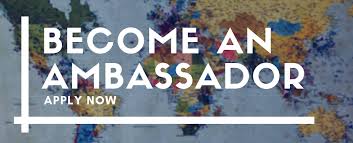We Are Committed to The Social Model Of Disability
We believe that disability is the result of society’s environmental, organisational, communicative and attitudinal barriers that exclude people with impairments. As a Deaf and Disabled People’s Organisation, it is necessary to break down those barriers, ensuring we, as disabled people, are heard.
The Social Model of Disability
An Easier to Read Guide
What is Disability?
Some people think disability is a problem because there is something wrong with a person’s body or mind.The Social Model of Disability says something different:
“Disability is created by physical, organisational and attitudinal barriers – and these can be changed or removed. It’s not the person who is the problem; it’s society that needs to change.”
Barbara Lisicki, 2013
What is the Social Model?
The Social Model of Disability is a way of understanding disability. It says:
People have impairments (like being Deaf, blind, having anxiety or using a wheelchair), but they are disabled when the world is not built to include them.
So, disability is not about what people can’t do – it’s about what society does not allow them to do.
What are Barriers?
Barriers are things that stop disabled people from living equally and independently.
The Social Model says there are 3 main types:
? Attitudinal barriers – wrong ideas, low expectations, or prejudice.
? Physical barriers – inaccessible buildings, transport, or spaces.
? Communication barriers – no sign language, Easy Read, or accessible formats.
Where Did the Social Model Come From?
In the 1960s and 70s, disabled people began to say:
“We are not the problem – society is the problem!”
Groups of disabled people helped create the Social Model to fight for:
- Choice
- Control
- Equality
The Social Model says disability is a social problem and we can fix it.
How Can We Fix It?
- Identifying the barriers
- Removing the barriers
- Providing support if needed
Example:
? Problem: Intercom has no screen. Deaf person can’t hear who is there.
✅ Solution: Add a video screen. Deaf person can see who is there
? Bonus: Everyone feels safer
What Do Disabled People Need to Live Independently?
These are the 12 Pillars of Independent Living:
1. Accessible information
2. Fair income
3. Accessible healthcare
4. Good transport
5. Accessible housing
6. Equipment or aids
7. Personal assistants
8. Inclusive education
9. Equal job chances
10. Advocacy
11. Peer support
12. Public access
These are rights, not extras.
Using Respectful Language
Words are powerful. Use respectful and accurate terms.
Don’t say: 'Handicapped', 'Retarded', 'Suffers from', 'Special needs'
Say: 'Disabled person', 'Wheelchair user', 'Access needs'
Always respect how people choose to describe themselves.
Why Say 'Disabled People'?
'Disabled people' shows that people are disabled by society not their impairments. 'People with disabilities' makes it sound like the problem is in the person, not the world.
Are There Other Models: Yes.
What Are the Other Models?
❌ Medical Model: Says the person is the problem and needs fixing. It might say: “You can’t walk, so you can’t work.”
❌ Charitable Model says: Says disabled people are to be pitied or helped through charity, not equality.
❌ Biopsychosocial Model: This model is being used in benefits and work assessments. It says if you don’t have a job, it’s your own fault. It ignores discrimination and inequality.
Is the Social Model Perfect?
Some people say it doesn’t fully include all experiences, like mental health or long-term illness.
This means we need to improve and use it better not throw it away.
Why the Social Model Matters
✅ Gives power back to disabled people
✅ Says society must change not people
✅ Helps everyone live in a fairer world
“Impairments will always exist but disability doesn’t have to. We can build a world that includes, not excludes.”
Barbara Lisicki, 2013
DAH Social Model of Disability
Ambassador Programme
What is a DAH SMD Ambassador?
The SMD Ambassador Program seeks to:
Generate and support a team of passionate individuals to spread the word about the Social Model for Disability across Haringey.
Highlight the value of D/deaf & Disabled Community’s Voice at events and be invited to promote our campaigns throughout the year.
Our ambassadors will spread the word and inspire people across all sectors and in all activities to help ensure the understanding and application of the SMD across all sectors.
Ambassadors help us bring attention to the needs of the D/deaf & Disabled community, demonstrate how DAH are working long term across sectors to meet those needs, so that every resident can experience the fullness of life.
DAH offer our SMD Ambassadors:
- Training, support, and mentoring
- Invitations to relevant local events
- Work on social model co-production projects
- Build additional life + work experience skills
- Build a great new network of contacts
- The opportunity to shape and embed the SMD across Haringey
To find out more, click here or email: info@d-a-h.org




